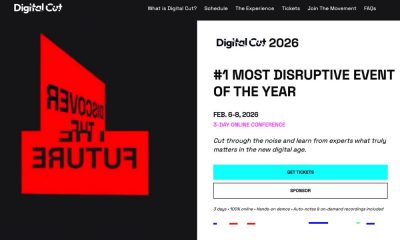Technology
10 Best Campaign Management Tools You Need to Try
Published
3 years agoon

Every business owner knows that managing a small to medium-sized campaign can be time-consuming and challenging. However, you don’t have to deal with it on your own. This brings us to this list of the best campaign management tools for entrepreneurs and small businesses.
What is a Campaign Management Tool?
Campaign management tools are invaluable for businesses looking to get the most out of their marketing efforts. They help streamline the process of planning, executing, and measuring the effectiveness of campaigns across various channels. These tools offer a range of features, including campaign scheduling, email list management, lead tracking, and analytics, to help businesses improve their campaigns and maximize their impact.
1. MailChimp

One of the most popular campaign management tools for businesses of all sizes, MailChimp is excellent for creating and managing email campaigns. Not only that, you can use it to manage contact information and customer segments, among many other uses.
With MailChimp, you can easily create beautiful emails and track the performance of your campaigns. It also integrates with various other services, like Google Analytics and social media, to provide more detailed insights into how your campaigns are performing. It has a free plan along with premium plans that will cost you from $13 to $350 per month.
2. Constant Contact

Another popular campaign management tool, Constant Contact, is excellent for small businesses. It’s easy to use and has a range of features to help you create effective email campaigns. With this campaign management software, you can easily create email templates, track the performance of your campaigns, and manage contact information.
It also integrates with various third-party services, like Facebook and Twitter, to provide more detailed insights into how your campaigns are performing. Its pricing ranges from $9.99 to $45 per month.
3. HubSpot
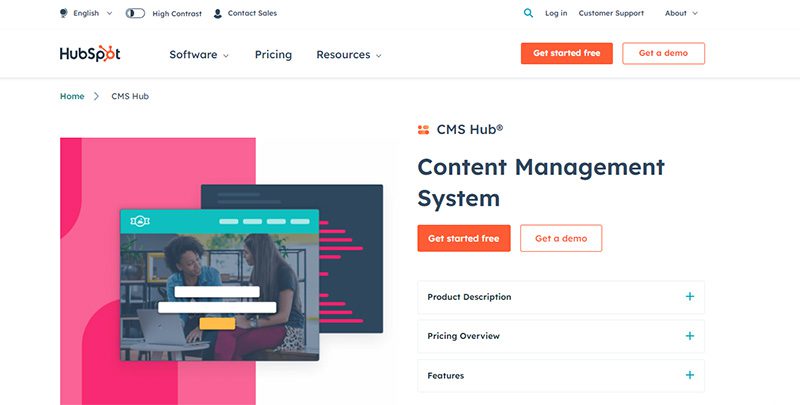
An all-in-one marketing and CRM platform, HubSpot helps you manage your campaigns, track leads, and measure the success of your efforts. The platform is designed to help you create, track, and optimize campaigns using various tools, such as automated workflows, A/B testing, and a visual drag-and-drop builder.
Additionally, HubSpot’s analytics dashboard gives you real-time insights that allow you to adjust your strategy for better results. It offers three plans with subscription rates that range between $45 to $3,600 per month.
4. AWeber

If you need help with your email marketing campaigns, AWeber is a powerful solution. It helps you create and execute successful campaigns using beautiful, engaging emails with drag-and-drop tools. It also provides detailed insights and analytics that can help determine which campaign works and what doesn’t.
With AWeber, you can segment your audience, personalize content, and even automate campaigns. Plus, you can take advantage of its integration with popular services like Shopify, WordPress, and more.
5. Campaign Monitor

A simple yet powerful email marketing tool, Campaign Monitor, will help you create and run campaigns with ease. It allows you to design beautiful email campaigns and track their performance with detailed reports. It also features a drag-and-drop editor that makes it easy to customize the look and feel of your campaigns.
With this campaign management tool, you can easily segment your lists to target specific audiences, set up automated email workflows, and track the success of your campaigns.
6. SendinBlue
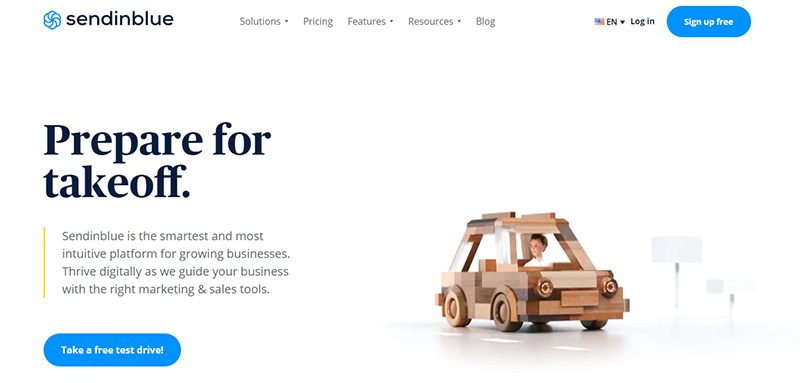
You can find all the tools you need in your marketing efforts on SendinBlue. With this software, you can easily manage your email campaigns, create stunning landing pages, and set up automated workflows to nurture leads and convert them into customers. It also offers detailed analytics to help you measure the success of your campaigns.
In addition, it integrates with popular apps like Zapier, Salesforce, and WordPress, making it easy to sync your data and automate your marketing activities. You can use it for free, but if you want more features, you can get a premium plan with pricing that starts at $25 per month.
7. Hive
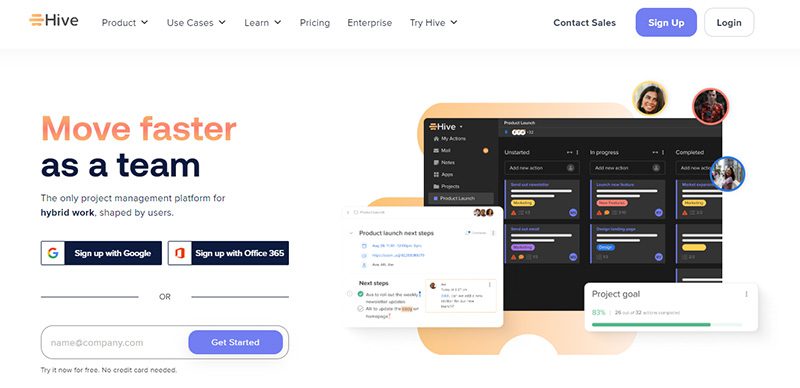
Another powerful campaign management tool, Hive, is specifically made for marketing, creative, and content teams. It allows you to collaborate on campaigns, create tasks and projects, and manage resources. This platform also has a built-in analytics platform that helps measure the results of campaigns.
You can start enjoying the amazing features of this tool with its forever-free plan. However, you can always get any of its paid plans if you need more. Pricing starts at $12 per month for its Teams plan, and for the Enterprise, you need to contact support to get a quotation.
8. Trello
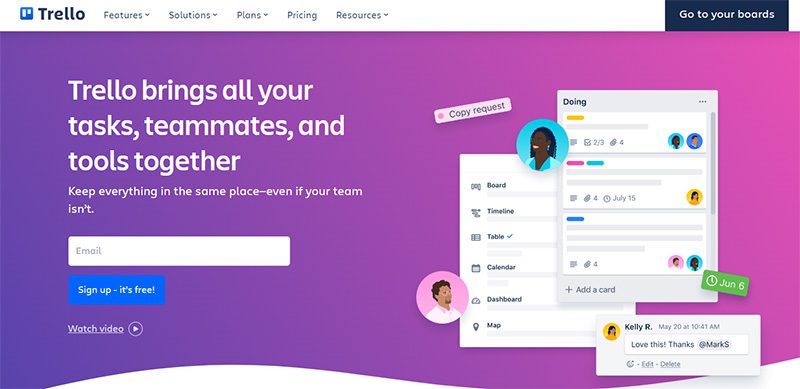
To help you manage your campaigns better, there is Trello. It is a popular project management tool that is commonly used for this exact purpose. It allows teams to organize tasks, set deadlines, assign tasks, and collaborate. Trello also has a built-in analytics platform that enables teams to measure the performance of their campaigns.
This campaign management tool is great for teams who want to manage campaigns quickly and efficiently while keeping track of their results.
9. Asana

A popular campaign management tool across the globe, Asana can help you efficiently manage tasks, projects, and campaigns. With it, you can assign tasks to team members, set due dates, and track progress in real-time. Additionally, Asana allows you to create visual boards and timelines to organize better and visualize your campaigns.
With its intuitive interface and powerful features, Asana has become a go-to tool for many businesses. And for startups and small companies, it has a forever-free plan. You can level it up and get premium plans that cost $13.49 to $30.49 per month.
10. Salesforce
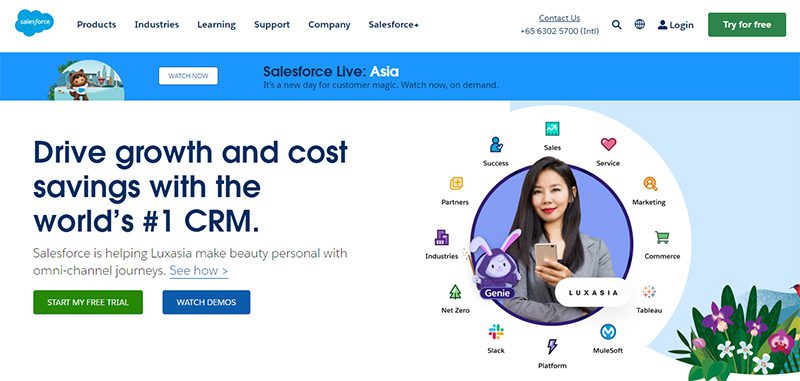
Like HubSpot, Salesforce is a CRM (customer relationship management) platform that provides powerful tools for managing campaigns. It allows you to create automated campaigns, segment customer lists, and track campaigns in real time. Additionally, Salesforce will enable you to integrate with other tools to enhance your campaigns, such as email marketing and social media marketing.
Salesforce offers four premium plans with subscription fees that range from $25 to $300 per user per month.
You may like

AI tools have evolved fast, and entrepreneurs now rely on them not just to automate tasks but to scale entire workflows. That said, it’s not surprising that many business owners are leveraging the power of cutting-edge technology. And this is where AI tools for entrepreneurs come in. Let’s look at what they are and a few examples you can check out.
1. Aomni Agent
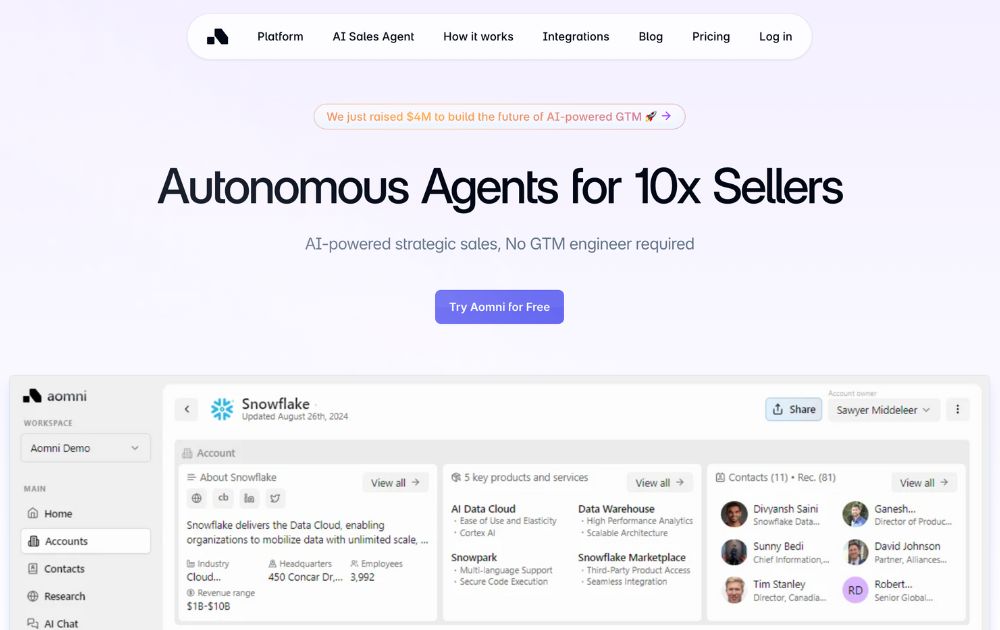
Packed with powerful AI-driven features, Aomni Agent is a tool that can help you grow your company’s outbound pipeline by conducting research to give you new Ideal Customer Profiles (ICPs). With it, you no longer have to create account plans for each of your prospects, as the AI tool will do it for you.
Aomni Agent engages with your customers, provides support, automates routine tasks, and gives you real-time insights and analytics, among many other features. To know its pricing and additional information, you need to contact them directly through their website.
2. Pictory
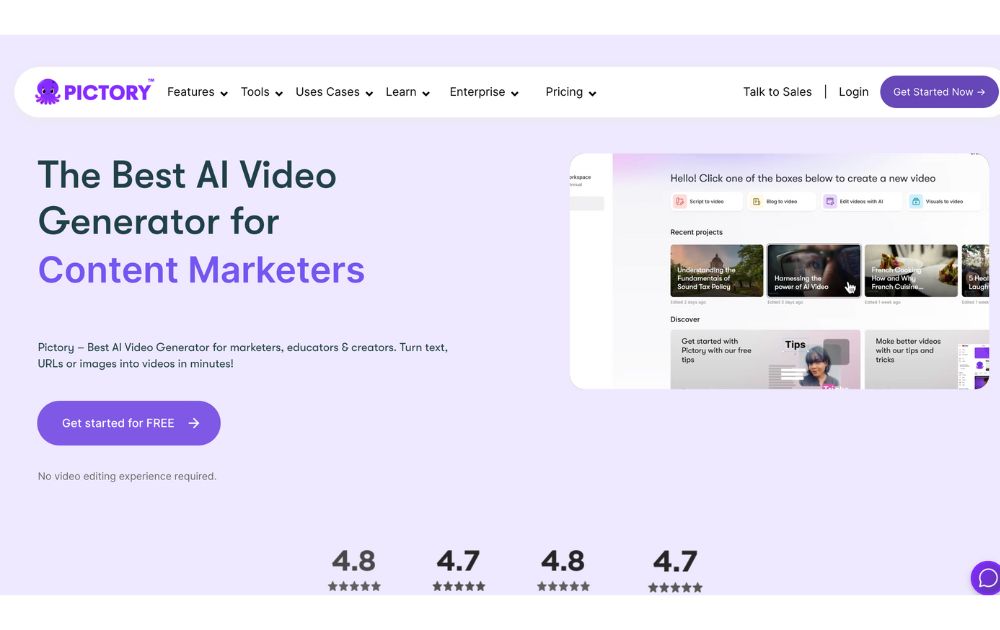
A video creation tool, Pictory, can help you create engaging and professional videos in minutes. It uses AI that automatically generates videos from your text, images, and audio. This means you get excellent results even without any video editing skills.
You can use Pictory to generate videos from your blog posts, articles, and other text. It can also edit existing videos and add images, music, or text. It offers a free trial and three plans with subscription fees that range from $23 to $119 per month.
3. Zeda.io
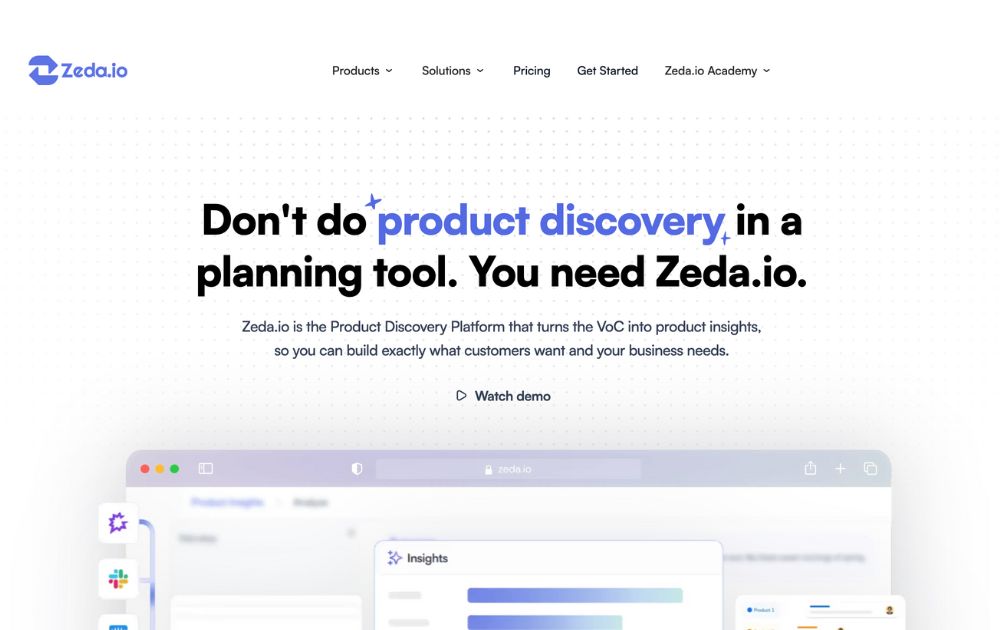
Zeda.io has grown into a powerful AI-powered product operating system. With its 2.0 update, the platform now connects customer feedback, product strategy, roadmapping, and internal documentation into a single intelligent workspace.
Its AI engine analyzes thousands of customer inputs, from surveys to reviews to support tickets, to identify patterns, prioritize features, and suggest product improvements. What used to take days of manual synthesis now takes minutes. The updated version also includes AI-generated product briefs, automated roadmap updates, and integrations with popular tools like Slack, Notion, and HubSpot.
4. Slite Ask
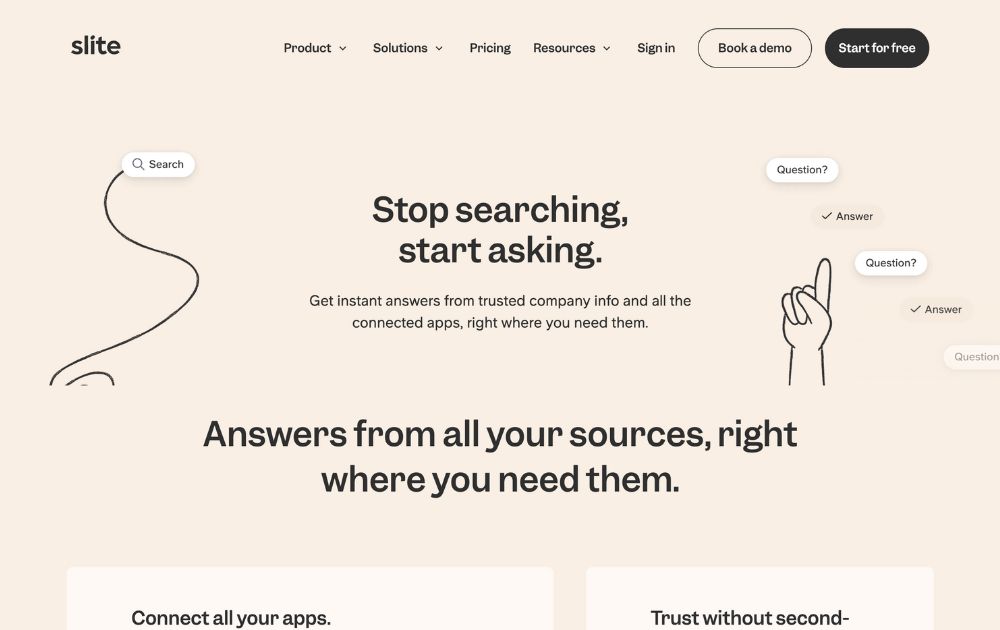
Slite Ask is one of the most reliable AI knowledge-base assistants for teams. Instead of manually searching docs or old messages, entrepreneurs can simply “ask” a question and get an instant answer based on their workspace knowledge.
The AI scans company documents, policies, SOPs, and internal notes to deliver accurate responses without hallucinations. This makes onboarding smoother and speeds up decision-making, especially for remote or hybrid teams.
5. Credal.ai
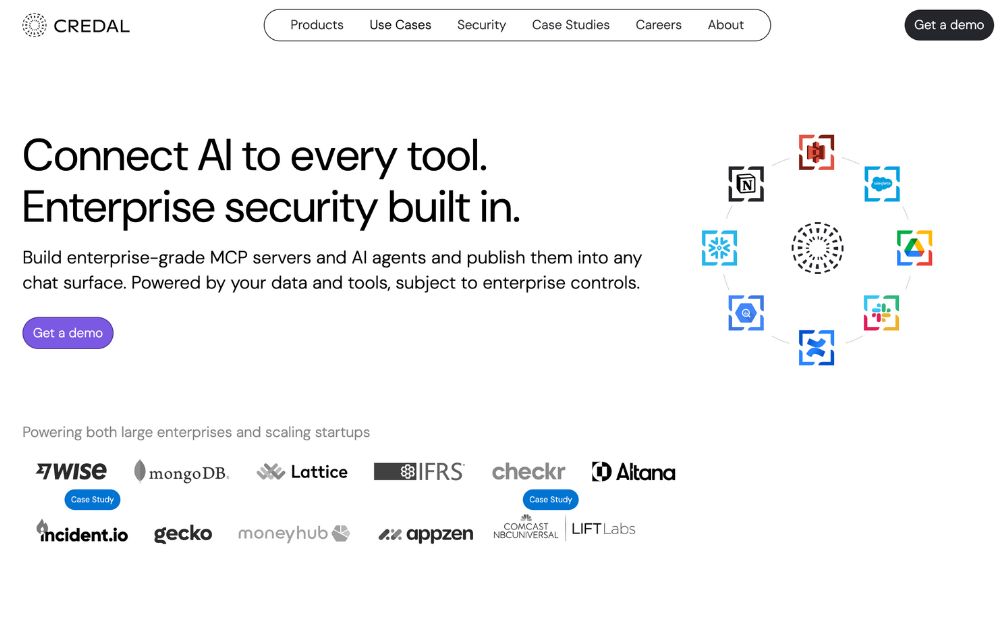
Keep your data safe with an AI tool that’s perfect for entrepreneurs. Credal.ai is a software that provides a secure environment for AI applications to run and monitors them for any potential security threats. This helps you protect your business’s sensitive data from unauthorized users.
Credal.ai protects your data from leaks, malicious codes, and unauthorized access. It has a free plan but with limitations, so to get the most out of this AI tool, a Team or Enterprise plan is recommended. Pricing starts at $500 per month.
6. Webscraping.AI
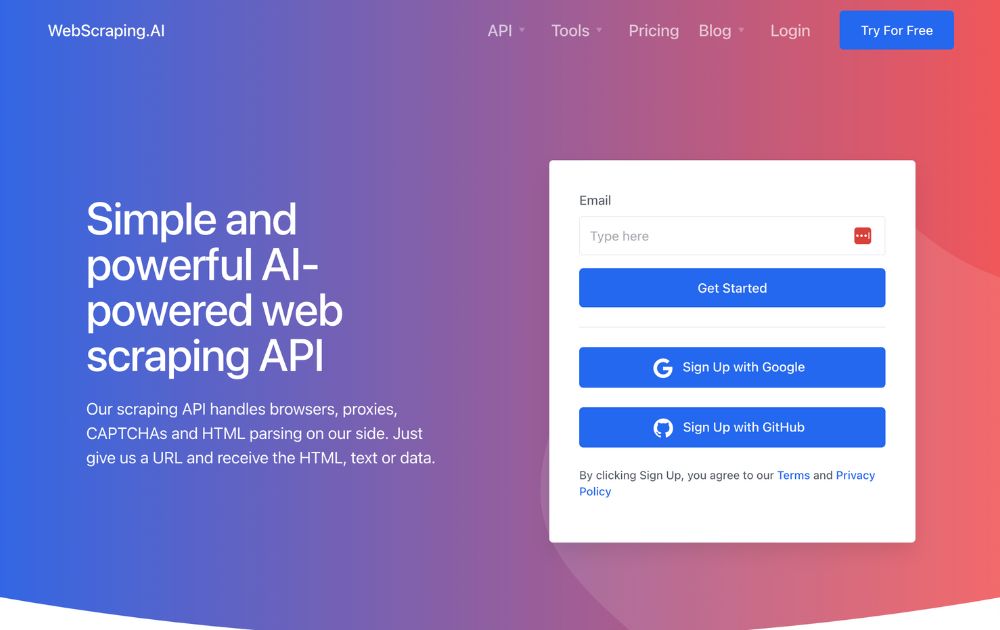
Web scraping is the process of extracting data from a website, such as stock prices, product details, company contacts, and many more. If you want access to this information, you’ll need Webscraping.AI. It is easy to use and won’t require you to have any coding or technical skills. All you need to do is enter the website you want to scrape, and the tool will automatically get the data from the website.
Webscraping.AI can help business owners make better decisions by providing accurate data to identify new opportunities. It can also help them make better decisions for their strategies. Pricing for this AI tool for entrepreneurs ranges from $29 to $249 per month, with no hidden fees.
7. ValueProp.dev
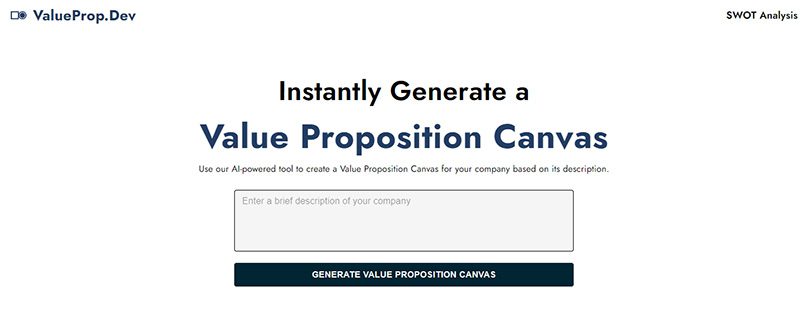
A value proposition is a statement that tells your customers what your product or service is all about. This can be tricky, but worry no more, as ValueProp.dev is an AI tool for entrepreneurs created explicitly for this. It uses machine learning to analyze your customer data to generate unique value propositions for you.
ValueProp.dev can help you improve your business by generating value propositions that significantly increase customer acquisition, retention, and sales. It is free for up to three value propositions, but they also have premium plans for more options and features. Pricing starts at $29 per month.
8. Lovo.ai

A text-to-speech and text-to-video platform, Lovo.ai can help you create engaging and informative content for your content marketing strategies. It uses AI to generate realistic and human-loke voiceovers, videos, avatars, and others. You can extend your reach globally as this tool can do voiceovers and videos in more than 140 languages.
Lovo.ai can help you increase your engagement, improve your SEO rankings, and boost conversions. You can try their free plan to give you an idea of what the tool can do for you. But for more features, a paid plan that starts at $19 per month can provide more value.
9. Zigpoll
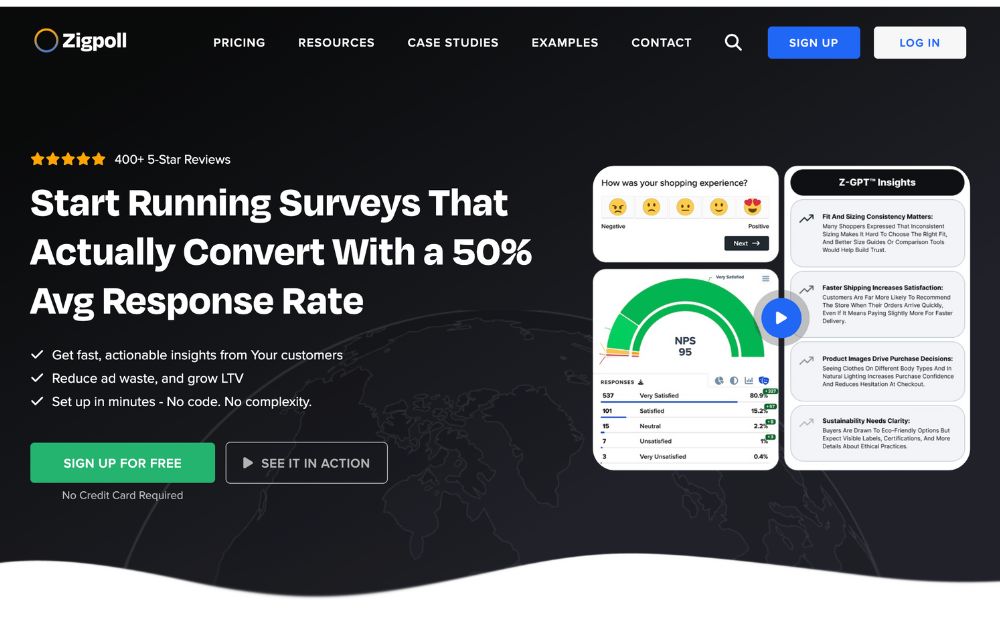
Zigpoll remains a solid choice for collecting customer insights, but its capabilities have expanded over the past two years. Today, Zigpoll uses AI to generate survey questions, summarize responses, detect sentiment, and even segment customers automatically.
Entrepreneurs can embed polls on websites, email campaigns, or post-purchase pages, then let Zigpoll’s AI categorize feedback into actionable insights. This helps brands quickly spot trends, product issues, or opportunities for upselling.
10. Pitches.ai
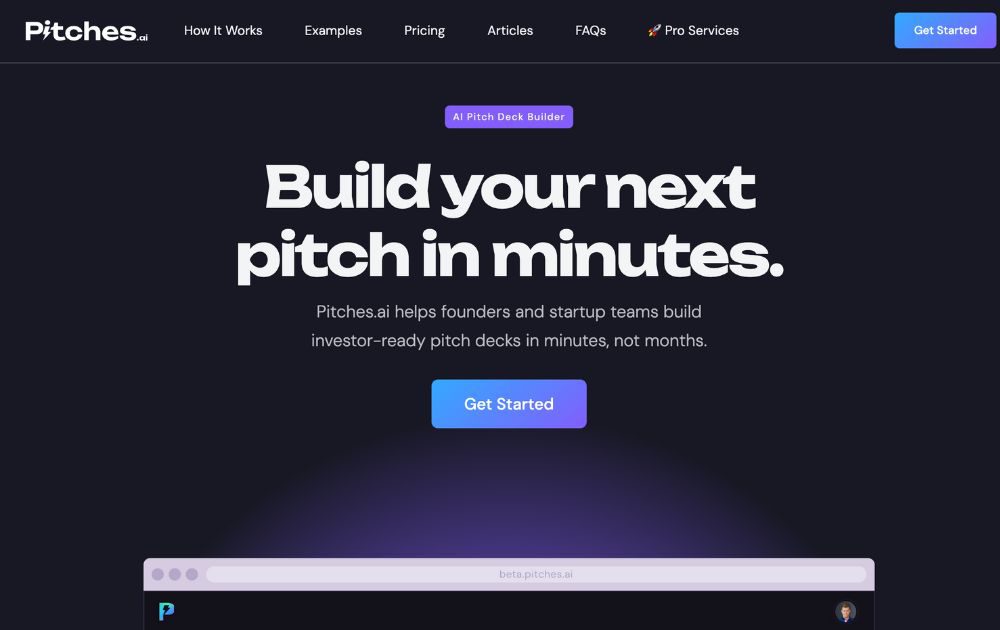
Are you looking to increase your business funding? Then creating the perfect pitch deck should be your priority. You can easily and quickly do this with Pitches.ai. It is an AI-powered tool for entrepreneurs to develop and refine pitch decks.
Pitches.ai analyzes pitch decks and gives you feedback on their structure, persuasiveness, and clarity. This gives you a higher probability of success. It offers four premium plans with prices ranging between $95 to $1,195.
Conclusion
Artificial intelligence is slowly becoming popular among business owners. Thanks to their many advantages, it’s no surprise that many will be using the technology from now on. These AI tools for entrepreneurs are a great example, and you should check them out today.
Featured Image Credit: Photo by Anna Shvets from Pexels
Technology
Our Top 10 Video Editing Tools for Smarter Content Production
Published
1 week agoon
November 13, 2025
Video editors are always on the lookout for the best tools and software. After all, everyone wants to create something memorable and that will last for years to come. And since video editing is the last step in creating amazing videos, finding the best is a challenge. To help you find the right one, here is our top 10 list of the best video editing tools:
10. Microsoft Clipchamp

Platform: Windows 10
Price: Free with Windows 10
Features: If you’re on Windows 10, you can use its built-in video editor, Clipchamp. It is more powerful and polished than its old Photos app editor. It’s ideal for trimming clips, adding text overlays, or layering transitions and music. Just search for “Clipchamp” in your Start menu or download the app from the Microsoft Store.
This little program will also help you add 3D effects to your video. It’s surprisingly user-friendly and helps add simple embellishments.
9. Nero Video
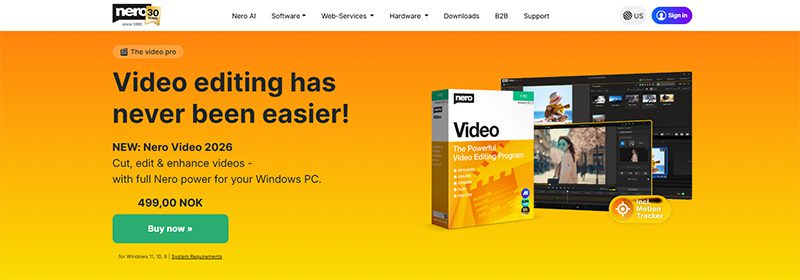
Platform: Windows and Mac
Price: One-time payment of $55.95
Features: Formerly known as Nero Vision, Nero Video is a classic video editing software that provides some of your simple functions. There’s also an advanced mode that provides multitrack keyframe and timeline functions. It’s great for beginners and people who are somewhat accustomed to video editing.
8. Animaker

Platform: Any computer
Price: $27 to $79 per month
Features: What’s cool about Animaker is that it’s an online service. The lightweight app will run right within your web browser. It has a drag-and-drop feature that lets you create professional videos with no hassle.
7. InVideo
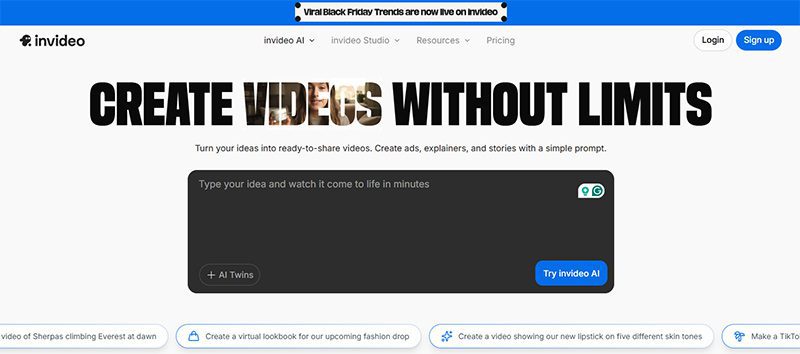
Platform: Any computer
Price: $35 to $999 per month, depending on your plan.
Features: InVideo is an AI-powered, completely cloud-based program. There are no downloads and no potential progress loss. It’s a true game-changer amongst video editing tools. InVideo is great for those who truly value convenience. It comes with over 6,000 templates to get any beginner started. Advanced users can begin editing from scratch, adding a list of transitions, frames, and stickers as they go.
6. VideoStudio Ultimate

Platform: Windows 8, 10, and 11
Price: $59.99
Features: If you’re up for more advanced features, VideoStudio may be right up your alley. Not only is this program user-friendly, but it also has a list of distinct features. It offers 360-degree VR and 4K support, plus new AI-assisted tools for faster editing and smarter effects. It’s also credited for being one of the first video editing tools to offer motion tracking. This allows users to track individual objects within each video cut, enabling very precise editing.
5. Adobe Premiere Elements

Platform: Windows and Mac
Price: $99.99
Features: Adobe Premiere Elements is cited as the best video editing tool for beginners. If your editing skills aren’t up to par yet, but you still want an in-depth program, then this tool is your best bet. This is a simplified version of Adobe Premiere Pro, which we’ll get to later. It gives you automatic motion tracking, video stabilization, and face detection, among other features.
4. Filmora

Platform: Windows and Mac
Price: $9.99 to $39.99
Features: If video editing is your main hobby, Filmora may be a great investment. It has a very clean and simple interface, with many Advanced options. Filmora offers built-in visual effects, along with title and text tools. It also offers 4K support. This video editing tool is all about high quality, with an attractive interface.
And the cherry on top? There’s also a mobile version. You can get FilmoraGo and tap into your video editing hobby anywhere.
3. iMovie
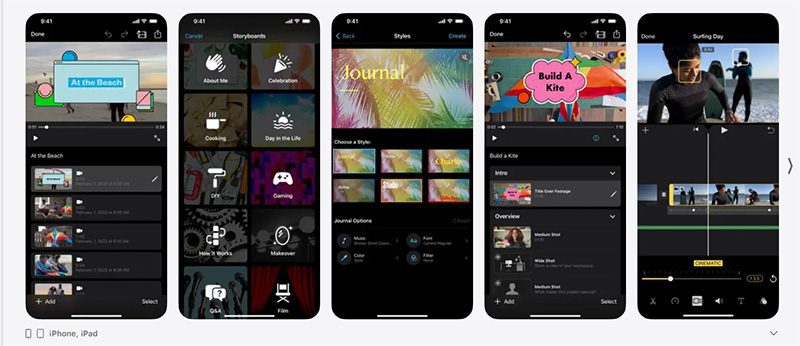
Platform: macOS and iOS
Price: Free with any macOS and iOS 15.3 or later.
Features: There are many reasons why I am an Apple fangirl, and this is one of them. All Apple Macs and newer iOS’ come with this really intuitive video editing tool called iMovie. Whether you’re a beginner or an advanced user, iMovie passes the vibe check. It has a very simple drag and drop feature, it has accessible visuals unlike any other, and it comes with a number of templates. Just ask any middle schooler if they’ve worked on a video editing project. Yeah, it’s that easy to use.
If you need any other reason to get an Apple product, this is it.
2. CyberLink PowerDirector
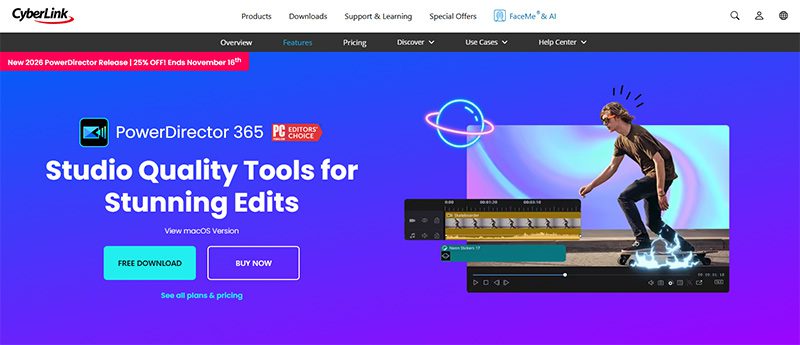
Platform: Windows and Mac
Price: $24.99 to $34.99
Features: Now on to the advanced video editing tools. This is CyberLink PowerDirector. It’s great for those who aren’t beginners but also aren’t necessarily professionals. It’s like a very detailed middle-ground software. What stands out about this tool is that it gives access to the Shutterstock library. There are so many options to choose from with this program; it has extra features that you probably didn’t even consider when downloading it. It’s one of the first tools to feature 360-degree video editing. You also get super-fast rendering and 4K visuals.
1. Adobe Premiere Pro

Platform: Windows and Mac
Price: $37.99 to $49.97 per month
Features: If you’re a professional video editor with little time to spare, this is the best option for you. Adobe Premiere Pro is the software that YouTubers and industry workers use to create high-quality, carefully crafted videos. It has everything you’ll need and more. This includes cross-platform compatibility, multi-cam options, multiple collaboration features, and best of all, free updates.
Technology
How TikTok and Instagram Track You Using In-App Browsers
Published
1 week agoon
November 11, 2025
Every time you take your phone out, you should be conscious of what information apps can download passively from you. While there’s always a level of information one can deny and consent to give, not all apps are transparent about what they can receive. If you’re an iOS user, however, there’s a newfound threat to your safety while browsing – particularly for two of the biggest social media platforms, Instagram and TikTok. But there’s a way you’ll be able to tell which in-app browsing tool will keep tabs on you.
The In-App Browsing Tool

The Verge is one of the first media outlets to report the new in-app browsing tool: InAppBrowser.com. But how do you use this tool? Well, Felix Krause, the developer, has said that you can open this site by sending this link through your friend’s DM OR posting it as a comment in any post. Open the site, and you’ll see technical jargon. However, Krause provides users information on what type of data Instagram and TikTok might be getting from you.
Krause posted about the security vulnerability on his blog last Aug. 10, 2022. Even if the in-app browsing tool is a great way of knowing what Instagram or TikTok can be tracking, it still has its flaws. But it will help non-technical users learn more about how their activities can be tracked. Plus, he made the app open source so other developers could improve on this script.
In addition, TikTok and Meta have even responded to Krause’s findings. TikTok has mentioned that they do not in any way collect keystroke (typing-related tracking activity) on the code, but it has been used for “debugging and performance monitoring.”
Meta has also said their piece about Krause’s findings. The code in question was for “measurement.” It’s to ensure they respect users’ decisions on what data they can track for advertising purposes.
Is TikTok and Instagram Safe to Use?

As of 2025, TikTok faces ongoing scrutiny over data privacy, with U.S. operations transitioning to Oracle-led control to address concerns about potential Chinese government access to user data. However, direct messages on TikTok still lack end-to-end encryption, leaving private conversations less secure compared to other platforms1.
Another thing to note when using this app is that messages aren’t encrypted either. Your messages to friends will not be as secure as other chat apps that would use end-to-end encryption.
How about Instagram?
Well, being a company under the Meta group, Instagram also collects information from users’ behaviors.
What TikTok tracks?
According to Wired, here are the data that TikTok gets from its users. Other social media networks do the same.
- Activities and preferences
- Clipboard files, such as text, videos, and images
- Location, which you can turn off
What Instagram tracks?

pCloud, a cloud storage firm, found that Instagram was the most invasive app in 2020. Based on their study, it appears that Instagram collects the following data:
- Purchases
- Location
- Contact details
- User content
- Search and browsing history
- Identifiers
- Usage data
- Diagnostic
- Financial info
How to Stay Safe from These Apps?
Even if these apps collect your data, you can still enjoy using them. However, you might have to limit usage by:
- Not sharing your personal info (numbers, addresses)
- Making your profile private
- Turning off location
Of course, the one solution to help you be safe from these apps is to delete them. You may have used it, and they have collected data from you. But if you no longer want more of your information tracked, deletion is the best way to do so.
And for other news and stories, read more here at Owner’s Mag!

What’s the Best Graphic Design Service for Merchandise Design?

Top 10 Resource Planning Tools Every Business Should Know About

What’s the Best Graphic Design Service for App Interface Design

What’s the Best Graphic Design Service for Modern Website UI/UX?

The CHIPS Act: What It Means for the Semiconductor Industry

Meet the Speakers of Digital Cut 2026: Seth Godin, Ali Abdaal & Neil Patel

What’s the Best Graphic Design Service for Beauty & Wellness Brands

Our Top 10 Video Editing Tools for Smarter Content Production

How TikTok and Instagram Track You Using In-App Browsers

The CHIPS Act: What It Means for the Semiconductor Industry

10 Best AI Tools for Entrepreneurs

Top 10 Resource Planning Tools Every Business Should Know About

What are the Best Graphic Design Services for Fashion Brands?

What’s the Best Graphic Design Service for Education & eLearning?
Trending
- Business3 days ago
The CHIPS Act: What It Means for the Semiconductor Industry
- Business17 hours ago
Top 10 Resource Planning Tools Every Business Should Know About
- Uncategorized3 days ago
Meet the Speakers of Digital Cut 2026: Seth Godin, Ali Abdaal & Neil Patel
- Featured1 day ago
What’s the Best Graphic Design Service for App Interface Design
- Business2 days ago
What’s the Best Graphic Design Service for Modern Website UI/UX?
- Business8 hours ago
What’s the Best Graphic Design Service for Merchandise Design?



